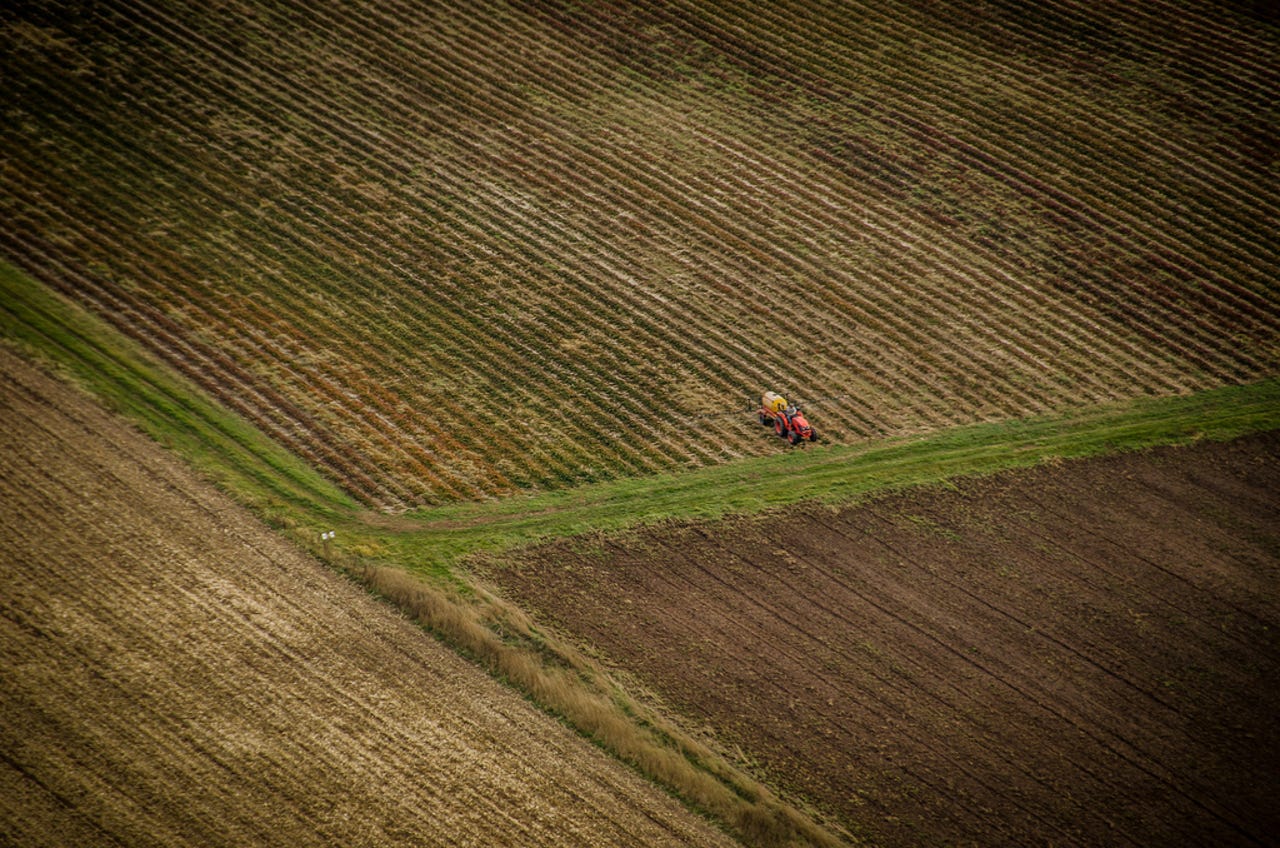Innovation
Robots, the new farmers
Automation (and drones, of course) are driving innovation in large-scale farming.


But while farmers are already able to farm an incredible amount of land with high-tech equipment with a shrinking workforce, there is still plenty of room for innovation.
Here's a look at a few of the latest innovations in large-scale farming:
Fertilizer Bot
In Minnesota, three brothers have come up with a new way to reduce fertilizer pollution. Instead of spraying a huge amount of fertilizer over an entire field, the Rowbot is a small robot that goes row-by-row to fertilize individual plants. As NPR reports:
The Rowbot, which is 2-feet wide and 7-feet long, is designed to apply nitrogen fertilizer with a lot more precision. Inside it are real-time sensors that are studying the plants and making find-tuned adjustments to how much fertilizer is applied to each plant, says Cavender-Bares.
The idea: save farmers money and protect the waterways that are awash with fertilizer.
Farmers can already ride massive equipment, like combines, through a field using GPS without driving. Now the Kinze Manufacturing, Inc. has developed new technology that allows farmers to instruct a tractor to go anywhere in the field without being behind the wheel. As Precision Ag reports:
The “go to here” feature has proven to be very beneficial for the farmers. Users can instruct the tractor to go to a spot in the field that they deem most convenient in relation to the combine’s path, instead of having the system follow the combine through the field. This helps increase efficiency and saves time because the farmer can gauge when they will need to unload next and make sure the tractor is there waiting for them.
Drones aren't just a source of innovation for Amazon. Some drone makers suspect their biggest market could be farmers. One of the many uses, less pesticide. CNN explains how:
Imagery will be tailored to wavelengths that will illuminate specific species of weeds. Problematic weeds in one field can be mapped, and sprayers can focus on just where the problem is versus a blanket application of the field. Less herbicide, less expense.
Robotic field inspector
In Germany, a robot has been developed that can move through a field autonomously to collect information -- nutrient levels, water levels, etc -- about every plant. As The National reports:
Packed with sensors and electronics as well as a 3D laser scanner, BoniRob can recognise gaps between rows and move without damaging plants."BoniRob can create a ‘fingerprint’ of every single plant,” says Prof. Ruckelshausen. "Afterwards it can find the location of a certain plant and measure its features again. We can document the growth process of every plant in that way.”
While much of this innovation is leading to positive outcomes, like less pollution, and all of it is making for a more efficient farm, what's the impact on farmers? In the United States, it's a mixed bag. Farmers are seeing profits go up, but at the same time jobs are, unsurprisingly, decreasing, according to Bloomberg. Farmers will see the biggest drop in employment of any job category this decade. By 2020, the sector will have lost 96,000 jobs out of a total of 1.2 million jobs. At the same time, the median wage of farmers is around $60,000 a year, the most of any of the top 20 declining employment categories.
Photo: Flickr/Eric Atkins
This post was originally published on Smartplanet.com